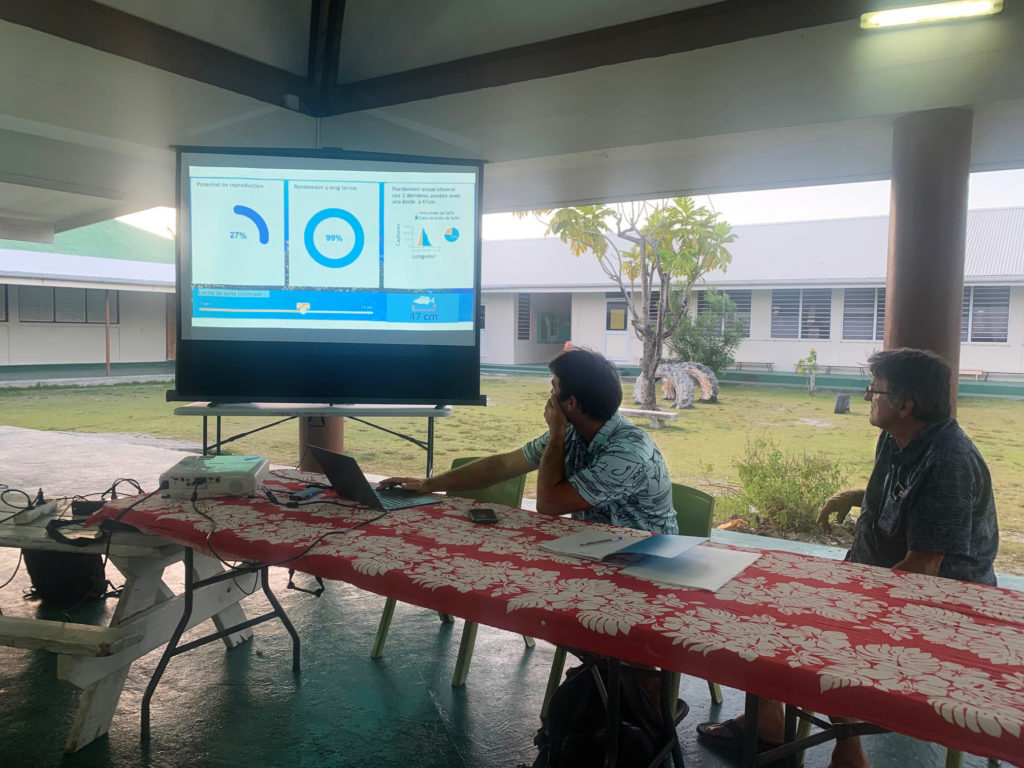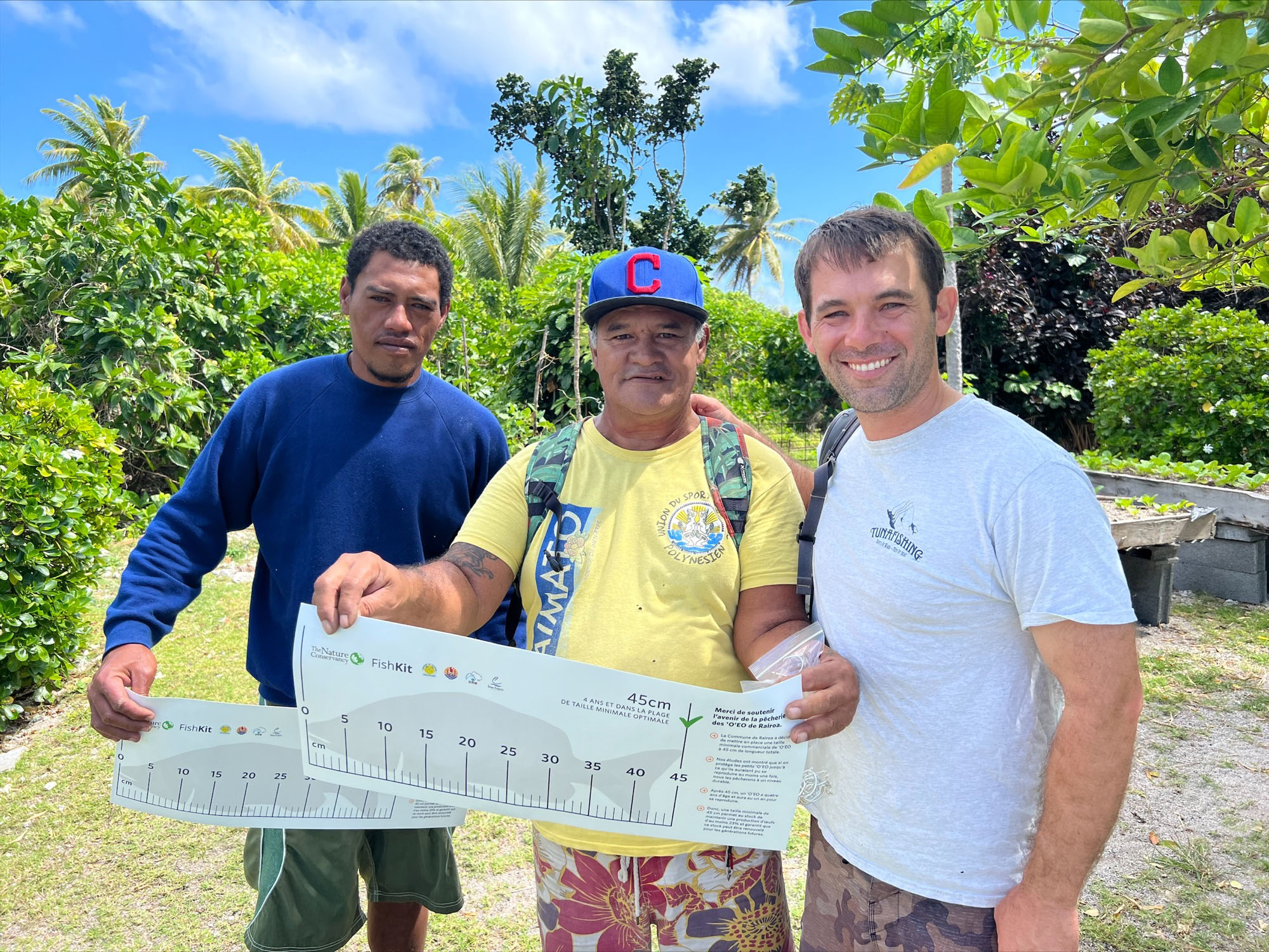Supporting the development of a minimum size limit for O’e’o
Rangiroa, one of the largest atolls in the world, is characterized by rich marine resources that have supported human populations for hundreds of years. In recent years however, fishers have begun to notice the decline of some of their most important fish species, including the O’eo, or Longnose Emperor. In 2019, The Nature Conservancy (TNC) was invited to consult with local communities about the concerning changes taking place in this fishery, which generates the majority of fisher income in some communities. For three years, TNC worked with community members to collect data and conduct a length-based stock assessment to answer fishers’ questions about the O’e’o population. Using the tool called the Stock Health Tracker, the assessment confirmed fishers’ suspicions that the population was in fact in decline, and that it made sense to consider management options to ensure the sustainability of the fishery. With the help of the FishKit team, community members decided to focus on size limits as the preferred management measure.

Using the FishKit tools, TNC shared and discussed both the health assessment and size limit options with community members and fishers. During a series of community meetings, the Size Limit Builder was used to discuss size limit options that would protect the population while also prioritizing fishers’ profits. The communities voted on a 45cm minimum size limit, which would ensure population sustainability but would also prioritize the sizes of fish that maximize profits. In 2022, the Mayor approved and implemented the 45cm minimum size limit, setting the precedent for the first reef fish size limit and paving the way for communities to set their own size limits in the future.

Currently, the community members are focused on implementing the size limit, and collecting information to understand the recovery of O’eo. TNC continues to support this process by providing helpful materials like size limit stickers to help fishers know which fish to keep, developing fish trap doors that release fish below 45cm, and training locals so they can take the lead in analyzing O’eo data and using the Stock Health Tracker. The goal is to ensure communities have the necessary tools and knowledge to manage their own fisheries into the future.

